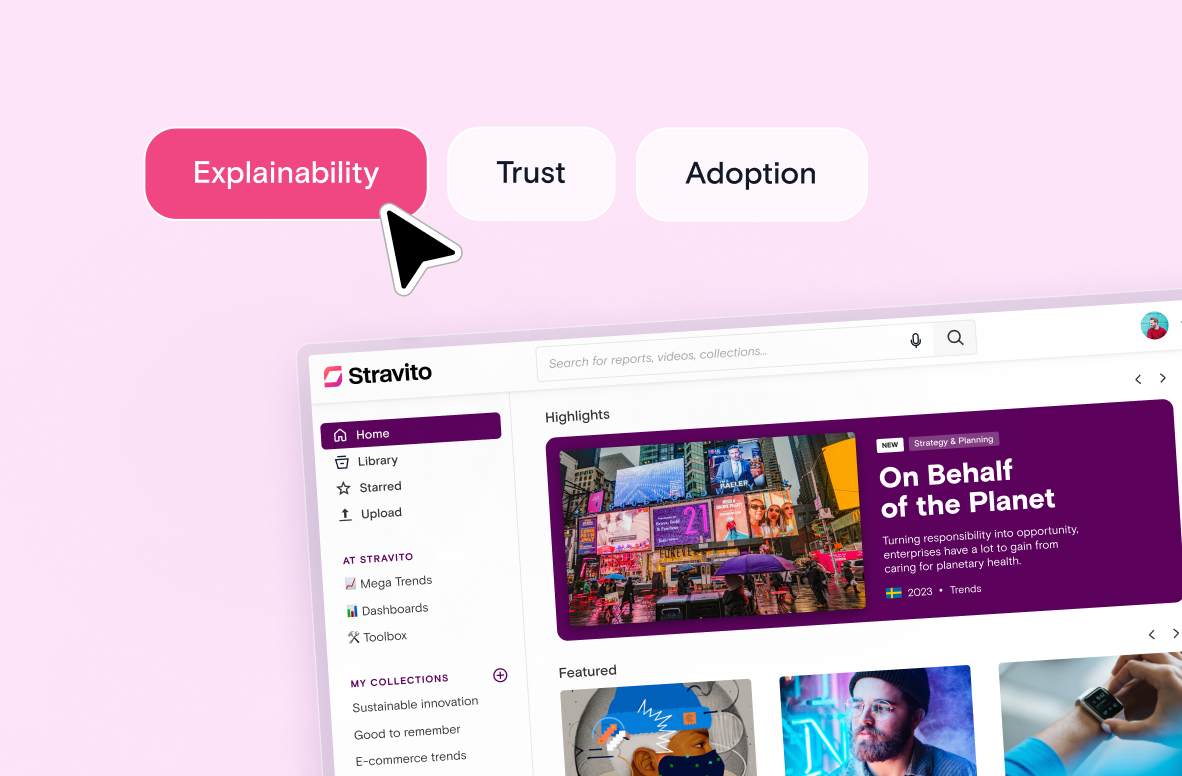In the landscape of organizational change, many guides offer theoretical strategies for managing organizational change in large corporations, yet practical, real-world examples of these strategies in action are rarer. This blog post moves from theory to practice by showcasing a recent success story from Sodexo, the global leader in sustainable food and valued experiences at every moment in life.
Technology as a Catalyst for Cultural Change
Sodexo continues to transform its traditional food services models with the mission of offering quality experiences in a consumer-centric approach. The Group is stepping up the pace in its key markets and developing a modern, sustainable food service offering, boosting the deployment of its commercial brands while continuing to invest in its digital ecosystem. In this context, Sodexo recognized the need for a tool that would foster a culture of insights and knowledge sharing.
The decision to choose Stravito was driven by several key capabilities of the platform:
- Efficient Content Management: The platform eliminates manual work with a fast one-step upload process, along with accurate auto-tagging and metadata extraction that streamline how content is organized and retrieved.
- Advanced Search Engine: Utilizing natural language processing, the search engine goes beyond exact matches to offer more intuitive and relevant search results. This allows for broader query responses tailored to the user’s needs.
- AI-Driven Synthesis: New AI capabilities synthesize information from multiple sources into comprehensive responses, complete with backlinks for easy fact-checking. This ensures a deeper level of insight and credibility.
- Conversational User Experience: The platform guides users with suggested prompts that help them dig deeper into data, and it facilitates the creation of presentation drafts ready for internal sharing, enhancing productivity.
Even though technology forms the backbone of change, it's the human element that truly drives it forward. Success often relies on individual stakeholders who are crucial in navigating these changes effectively. Therefore, it is vital to entrust these projects to the right people within the organization, who are capable of handling many stakeholders and coordinating between numerous local teams.
Streamlining Global-Local Collaboration
Reflecting on the Stravito implementation, the team had to face the scale of Sodexo and the diversity of its market segments, which represented many stakeholders and perspectives from both global and regional teams to manage, in order to implement the solution.
Conversations with local teams revealed varying expectations and focuses for each region. To manage these differences effectively, the global team adopted a phased implementation approach. This strategy involved prioritizing essential features for immediate deployment while planning additional features over time.
Content management for each region presented another challenge. To streamline the process, the global team took charge of preparing content for upload, including cleansing and organizing existing data for the regional teams. This approach helped kickstart the project and saved time while ensuring the contribution and engagement of the local teams as key stakeholders.
From the first access to the final rollout and giving access to all teams, the process to implement Stravito took Sodexo two months.
Key Takeaways from Sodexo’s Successful Implementation
From the strategic rollout of the platform, Sodexo learned several valuable lessons that can serve as recommendations for other organizations embarking on similar technological transformations. Here’s what they learned:
- Engage Teams Early and Often: Involve potential users from the beginning of the decision-making process, including them in product demonstrations and feedback sessions. This ensures the solution meets actual needs and fosters a sense of ownership among users, which can lead to higher adoption rates.
- Secure Executive Support: Gain buy-in from senior leadership early in the process. When C-level executives endorse a solution and act as sponsors, it significantly enhances the project’s visibility and perceived importance, facilitating smoother adoption across the organization.
- Involve Relevant Departments From the Start: Incorporate cross-functional teams such as IT, Legal, and Communications from the initial stages. Direct engagement with the solution provider can address potential issues early, streamlining the implementation process and avoiding last-minute hurdles.
- Clarify Governance Early: Address key governance questions before beginning the implementation, such as where does relevant research come from, who will have access, who will benefit, who will manage the platform, and what content qualifies as 'Insights documents' to maintain consistency and coherence on the platform.
- Prepare for Resistance: Anticipate and address objections or resistance from various teams by understanding their concerns and proactively communicating. Effective communication and management support are key to overcoming barriers.
- Adopt a Phased Implementation Approach: Focus on essential features that need to be operational immediately and identify other features that can be developed over time, helping to manage resources efficiently and maintain focus on critical needs without overwhelming users.
- Plan for Content Management: Devote adequate time and resources to content preparation, including the cleansing and organizing of existing data, crucial for ensuring the platform’s initial usefulness and facilitating easier ongoing management.




